Yamaha LL6 ARE
$428.99
Experience superior sound quality with the Yamaha LL6 ARE – a premium acoustic-electric guitar designed with state-of-the-art technology to bring out the best in your music.
Compare
Description
Yamaha is a well-known brand in the music industry, and they have been producing high-quality guitars for many years. Their LL6 ARE acoustic guitar is no exception. This guitar is built with a solid Engelmann Spruce top, a rosewood back and sides, and a 5-ply neck made from mahogany and rosewood.
One of the unique features of this guitar is its Acoustic Resonance Enhancement or ARE technology. This technology is employed during the guitar’s manufacturing process to artificially age the wood. ARE technology involves a process of controlling the temperature, humidity and atmospheric pressure to emulate the effect of the guitar aging over a period of several years. This process introduces chemical changes affecting the molecules, hence creating the same warm tone and projection that usually takes years of playing to achieve.
The Yamaha LL6 ARE also features an upgraded scalloped bracing pattern that both enhances the overall resonance of the guitar and makes playing more comfortable. The fingerboard is made from ebony, which is known for its durability and smooth playing surface. There are 20 frets on the fretboard, which allows guitarists to play a wide range of notes and chords.
The hardware on this guitar is of high quality. The open-gear tuners provide smooth and accurate tuning, and the saddle and nut are made from Urea Resin, a durable yet lightweight material. The bridge is also made from ebony, which helps transfer the vibrations of the strings to the soundboard, thereby creating a clear, articulate sound.
In terms of sound, the Yamaha LL6 ARE has a rich, warm tone with excellent projection. The midrange and treble frequencies are well balanced, and the bass is deep and resonant without overpowering the other frequencies. Thanks to the ARE technology which affects the molecular structure of the wood and promotes vibration, the guitar produces amazing resonance and sustain.
Overall, the Yamaha LL6 ARE acoustic guitar is an excellent choice for any guitarist looking for a quality instrument that delivers amazing sound and long-lasting durability. Whether you’re a beginner or a seasoned player, this guitar will provide you with all the features you need to create beautiful music.
Yamaha LL6 ARE properties
| Product name |
LL6 ARE |
| Brand |
Yamaha |
| Type |
String Instruments |
| String Instruments |
Acoustic Guitar |
| Number of Strings |
6 pcs |
| String Type |
Nylon |
| Built-in Microphone |
No |
| Handedness |
Right-handed |
| Number of Frets |
20 |
| Cutaway |
No Cutaway |
| Size |
4/4 |
| Wood Type (front) |
Ebony |
| Wood Type (back) |
Rosewood |
| Wood Type (body sides) |
Rosewood |
| Wood Type (neck) |
Mahogany, Rosewood |
| Wood Type (fretboard) |
Rosewood |
| Colour |
Ebony |
Frequently Asked Questions:
How does the scalloped bracing design of the Yamaha LL6 ARE contribute to its exceptional projection and tonal clarity compared to traditional bracing methods?
The scalloped bracing design used in the Yamaha LL6 ARE is a modern engineering technique that provides superior projection and tonal clarity compared to traditional bracing methods. Traditional X-braced patterns are still commonly found in many acoustic guitars, but they can sometimes result in a loss of volume and clarity due to the stiffness created by the solid wood crossbars. Scalloped bracing is a more advanced technique that involves curving the braces beneath the strings to create a more flexible and responsive soundboard. This allows for better vibration transfer between the strings and the body, resulting in greater volume and a wider frequency response. Additionally, scalloped bracing helps to reduce the weight of the bracing material, which can also contribute to improved tonal clarity by allowing the guitar's natural resonance to shine through. Overall, the LL6 ARE's scalloped bracing design is a key factor in its exceptional projection and tonal clarity, delivering rich, full-bodied sound with impressive volume and clarity that truly brings out the best in each note played.
How does the scalloped bracing design on the Yamaha LL6 ARE contribute to its exceptional projection and tonal richness?
The scalloped bracing design used in the construction of the Yamaha LL6 ARE acoustic guitar is a technique that involves cutting out small notches, or scallops, from the bracing that supports the strings inside the body. This design allows the wood to vibrate more freely and efficiently, resulting in exceptional projection and tonal richness. The scalloped bracing provides a more balanced and responsive soundboard, allowing for a fuller and more pronounced tone with greater volume and sustain. Additionally, this design also helps to reduce overall weight, making the guitar comfortable to play and carry. Overall, the scalloped bracing on the Yamaha LL6 ARE contributes significantly to its exceptional tonal qualities, making it an ideal choice for both experienced players and beginners alike.
How does the scalloped bracing design on the Yamaha LL6 ARE contribute to its exceptional tone and volume compared to traditional guitar construction methods?
The scalloped bracing design used in the Yamaha LL6 ARE acoustic guitar contributes significantly to its exceptional tone and volume when compared to traditional guitar construction methods. Scalloping is a process of removing small sections from the underside of the X-braces that support the top of the guitar. This design allows for more flexibility and vibration in the soundboard, resulting in a more pronounced and balanced tonal response with enhanced clarity and projection. Compared to traditional bracing methods, which often restrict the soundboard's movement, scalloped bracing enables the LL6 ARE to produce a richer, fuller sound with greater volume and sustain. Overall, this innovative design is one of many features that set Yamaha guitars apart in terms of tonal quality and performance.
How does the scalloped bracing design in the Yamaha LL6 ARE contribute to its exceptional projection and tonal quality?
The scalloped bracing design used in the construction of the Yamaha LL6 ARE is a key factor in its exceptional projection and tonal quality. Scalloping is a process that involves carving out small indentations, or scallops, on the underside of the guitar's top plate between the braces. This design reduces weight at the points where the brace meets the top, allowing for greater vibration and resonance throughout the instrument. As a result, the LL6 ARE produces a full, rich sound with exceptional projection and clarity, making it an ideal choice for both fingerstyle and strumming playing styles.
What is the specific reason behind the difference in sound quality and playability between the Yamaha LL6ARE's rosewood and spruce top models?
The Yamaha LL6ARE, a beautiful grand auditorium guitar with a rich history. When it comes to the difference in sound quality and playability between the rosewood and spruce top models of this instrument, there are several key factors at play. Rosewood and spruce are both tonewoods that offer distinct sonic characteristics, but they also have different physical properties that affect how they respond to string vibrations. Rosewood, particularly Brazilian rosewood or Indian rosewood, is a dense hardwood that provides a rich, warm, and complex tone with good sustain. It's known for its ability to add warmth and depth to the sound, making it well-suited for fingerstyle and classical playing styles where subtle tonal nuances are prized. In contrast, spruce is a softer wood compared to rosewood, which makes it easier to vibrate under string tension. This leads to a brighter, more projecting tone with faster decay times, often favored by steel-string players who want their guitar to cut through the mix. Spruce also tends to produce a more articulate sound with a clearer definition of individual notes. Now, in terms of playability, rosewood fretboards tend to be slightly smoother and easier on the fingers than spruce due to its denser grain structure. However, this can vary depending on how well the fretboard has been finished. In the case of the LL6ARE's models, Yamaha likely chose spruce for the top because it provides a clear, projecting sound ideal for stage performances or recording in environments where clarity is key. Meanwhile, rosewood may be preferred by players looking for a warmer, more intimate sound that suits small venues, studio recordings, or personal performances. Of course, individual player preferences play a significant role here as well. Some players might find the brightness of spruce too harsh, while others prefer the warmth of rosewood. Ultimately, the choice between the two comes down to personal taste and playing style. It's worth noting that Yamaha also offers other tonewood combinations for their LL series guitars, each with its own unique sonic characteristics. For instance, the LL6ARE with a mahogany neck might offer a slightly warmer midrange than the spruce top model, while still providing good sustain and clarity. In summary, the difference in sound quality and playability between the rosewood and spruce top models of the Yamaha LL6ARE guitar can be attributed to the distinct sonic properties of these two tonewoods. While rosewood adds warmth and depth, spruce provides a brighter, more projecting tone with faster decay times.
Before you buy Yamaha LL6 ARE
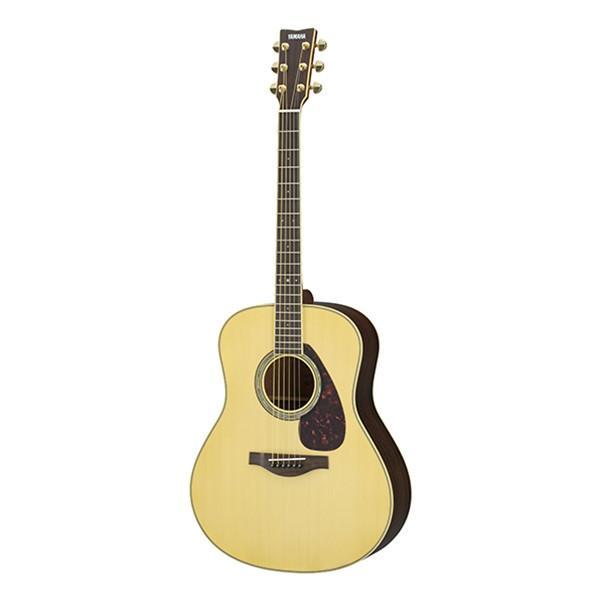

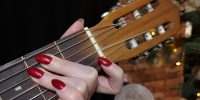

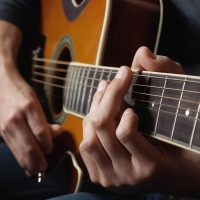

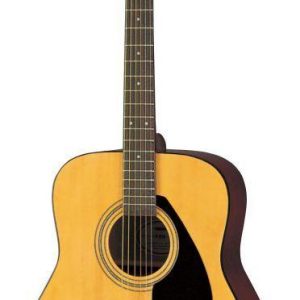
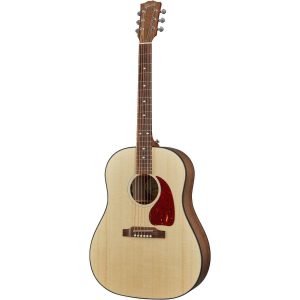
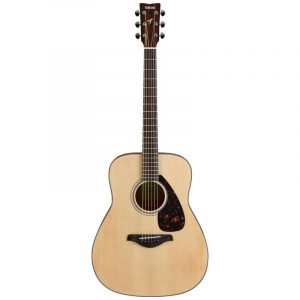

Viktor –
There is a lot to improve in every cheap guitar. These are not oil wrenches. You need to put glue, e.g. a drop, under the handles of the keys and spray the activator. Then the backlash will be eliminated. You always have to correct the saddle, select the lower ridge, adjust the curvature of the bar, make adjustments to the thresholds. Only then will it be easy and fun to play. A cheap guitar does not have factory hours for finishing, and cheap wood changes its shape and dimensions by itself.
Only guitars that are many times more expensive are perfect. If you are buying basic models, it is better to choose a more expensive store that has a luthier on board and will make corrections. These bargain prices are on profit margins of a few percent, so there is no chance of including solid service, adjustments and adjustments. Then the client is the tester. Either he will get to know him and give him corrections to the luthier, or he will not recognize him and he will tire.
This applies to all guitars below a certain amount. Comparison engines are great for buying washing machines and televisions, which are the same in every store. Instruments are a completely different story and a lot depends on the store itself, because each piece is different. The higher the price, the greater the chance that someone will add an hour of work and improve what needs to be done.